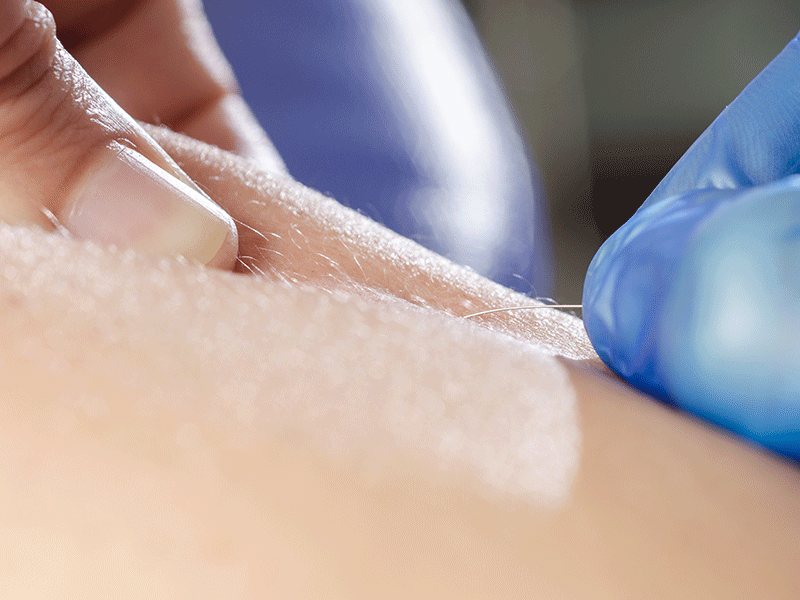Dry Needling to Relieve Painful Muscle Knots

Have you ever felt knots in your muscles that are tender when you press on them and wondered why they are there? These sore to the touch bumps or knots are called Trigger Points. You can have an active trigger point which essentially is a spot in a muscle that is currently giving you pain. This pain is either located right at the trigger point or it can actually be painful in another part of your body. For example, knots in some of your neck muscles can give you pain into the head or down the arm. Knots in your hip can give you pain in your back, buttocks or down the leg. Research was done by Simmons and Travel that actually mapped out common pain referral patterns of these trigger points. Many practitioners including physical therapists refer to their groundbreaking research today for diagnosing and treating muscle referral pain.
Trigger Points are basically tight spots in muscles where the muscle fibers are shortened or banded and have a higher irritability. Research has shown that we have a lot more chemical irritants in a trigger point spot compared to the rest of the muscle. Manual therapy, including trigger point release or acupressure can help to decrease these symptoms, but a faster working and more direct approach to treating trigger points is a technique called Dry Needling. Dry Needling is the skilled technique performed by a physical therapist using a very thin filiform needle to penetrate the skin and underlying tissues to affect change in trigger points. This is done by creating a twitch response in the muscle that is affected. After a session of dry needling to a particular trigger point, the muscle fibers return to their normal length; the spontaneous electrical activity (irritability) decreases to a more normal level; chemical irritants dissipate; blood flow improves and healing factors come to the area. These changes can greatly reduce or eliminate pain and actually allow the muscle to function better, effectively improving the strength of the muscle. One session of dry needling can have continued beneficial changes in the muscle for five to seven days after. Research shows that multiple sessions of dry needling can actually increase the number of capillaries in the area, improving blood flow.
Trigger points in the body develop for a reason. The muscle that has the trigger point often feels overworked or strained. This could be due to muscle imbalances, flexibility issues, alterations in posture or movement dysfunction. The most important aspect of preventing a trigger point spot from returning after a dry needling session is to help eliminate the excessive strain on the muscle. This often includes corrective exercises given by a therapist, change in mechanics of movement, or changes in posture or ergonomics. For example, a physical therapist may have a runner concentrate on making a small change in their stride; help change the ergonomic set up for an office employee; or give strengthening and stretching exercises to someone with a shoulder injury. The combination of manual therapy and/or dry needling with a few corrective exercises is often enough to resolve a person’s pain entirely.
For more information on the dry needling technique offered by Franklin Rehabilitation, contact us at (414) 425-9700.
